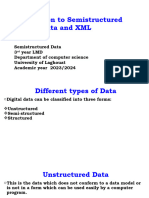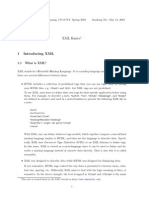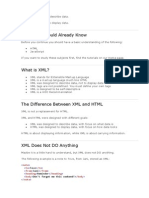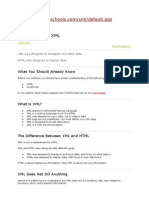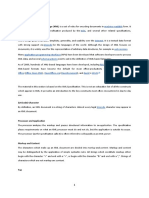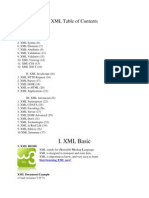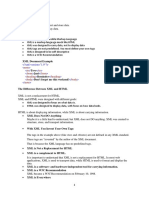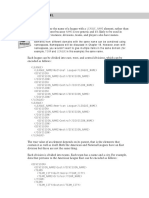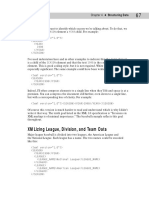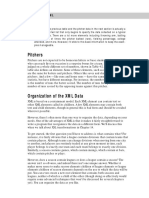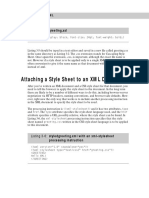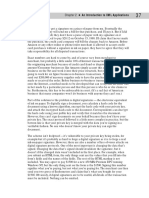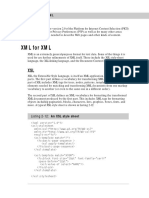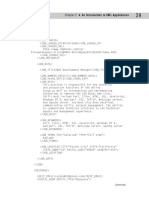0% found this document useful (0 votes)
74 views1 pageLoading The XML File Into A Web Browser: Chapter 3 Your First XML Document
The document discusses creating and viewing an XML file. It can be saved as ASCII or UTF-8 in Notepad. UTF-8 is backwards compatible with ASCII. The XML file can then be opened directly in a web browser, though the browser may not know how to display the elements without being told via a style sheet.
Uploaded by
Sai KuamrCopyright
© © All Rights Reserved
We take content rights seriously. If you suspect this is your content, claim it here.
Available Formats
Download as PDF, TXT or read online on Scribd
0% found this document useful (0 votes)
74 views1 pageLoading The XML File Into A Web Browser: Chapter 3 Your First XML Document
The document discusses creating and viewing an XML file. It can be saved as ASCII or UTF-8 in Notepad. UTF-8 is backwards compatible with ASCII. The XML file can then be opened directly in a web browser, though the browser may not know how to display the elements without being told via a style sheet.
Uploaded by
Sai KuamrCopyright
© © All Rights Reserved
We take content rights seriously. If you suspect this is your content, claim it here.
Available Formats
Download as PDF, TXT or read online on Scribd
/ 1



